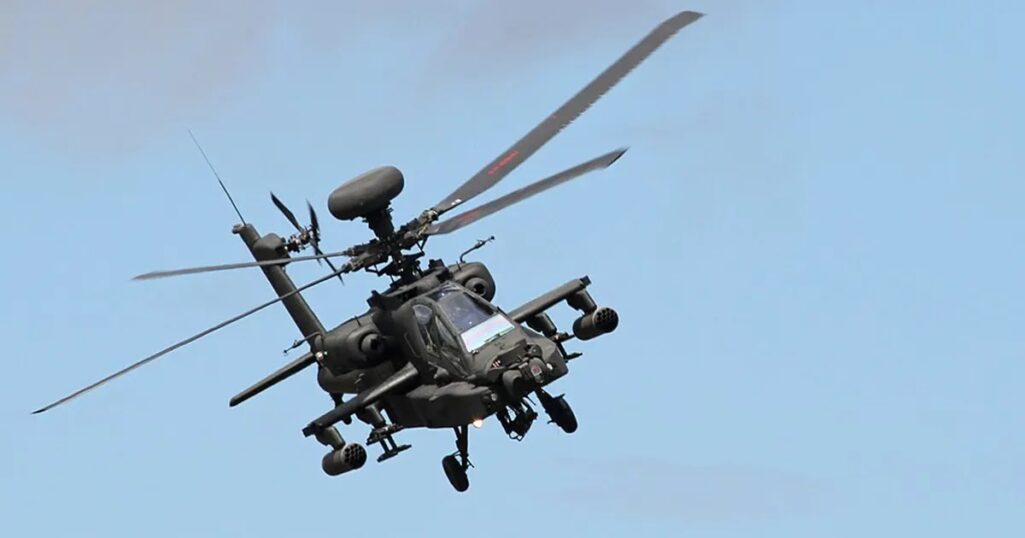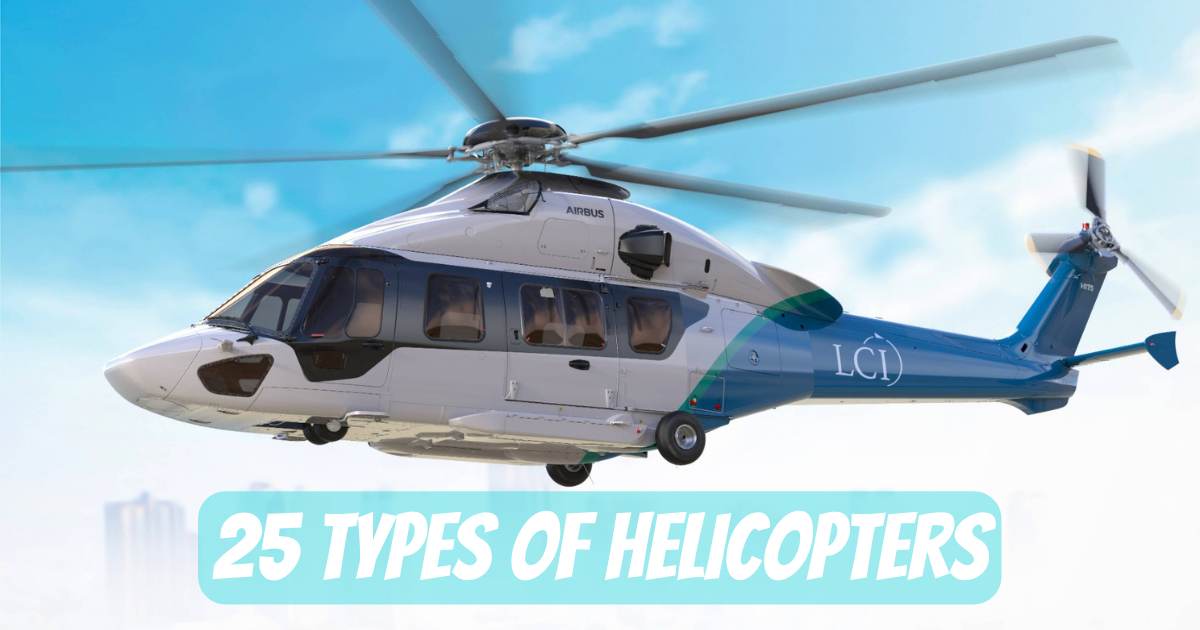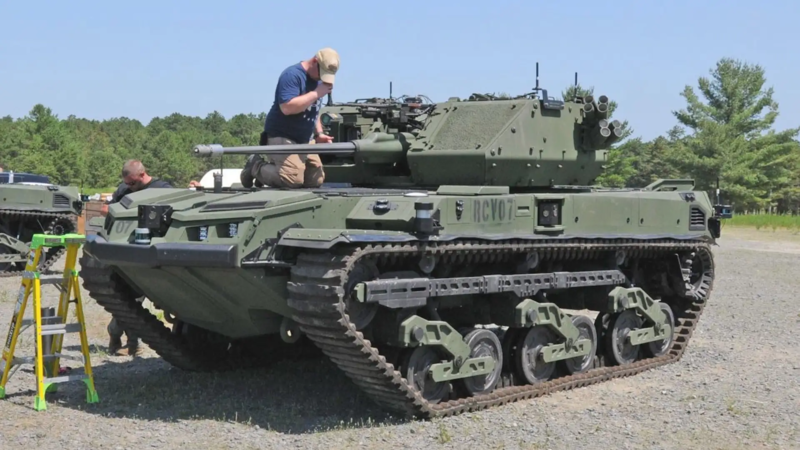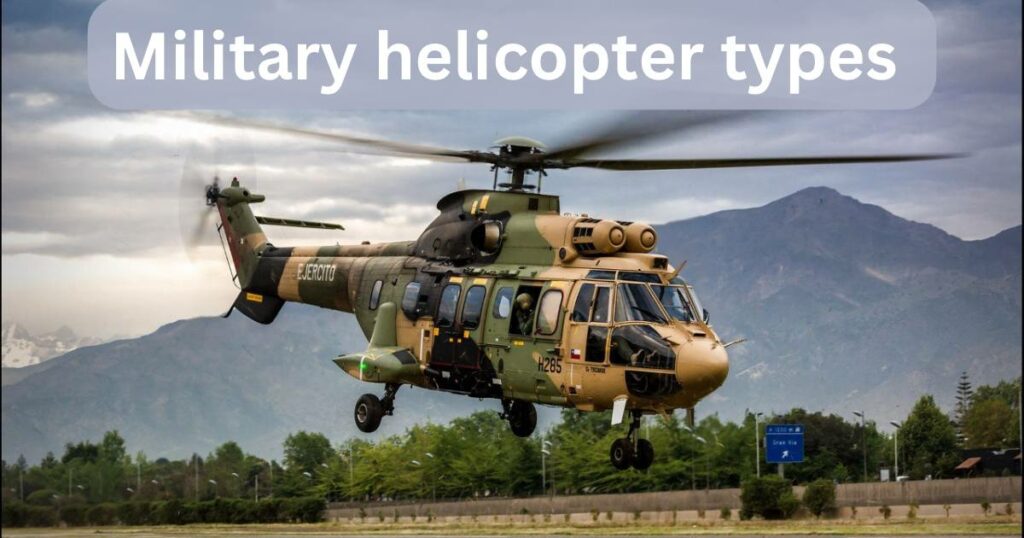
When it comes to weaponry systems, helicopters are among the most flexible and adaptable in the world. In both war and peace, helicopters play a crucial role. The military helicopter, whose development began in the 1930s, played a pivotal role in the war effort during World War 2. Thanks to its rotors, the helicopter could take off, land vertically, hover, and fly in all directions, giving the military unprecedented mobility.
There are a wide variety of sophisticated military helicopters. Each category was developed to facilitate a particular set of tasks over a broad spectrum of military operations. Helicopters like the “Black Hawk” and “Chinook” are frequently referenced in the media and popular culture. The military designation system formally names each of these helicopters according to its primary role.
In this article, we will examine the seven primary classes of military helicopters and identify the most well-known examples of each class. To better assist your imagination, we have included images. Keep going till the very end!
1. Attack Helicopters
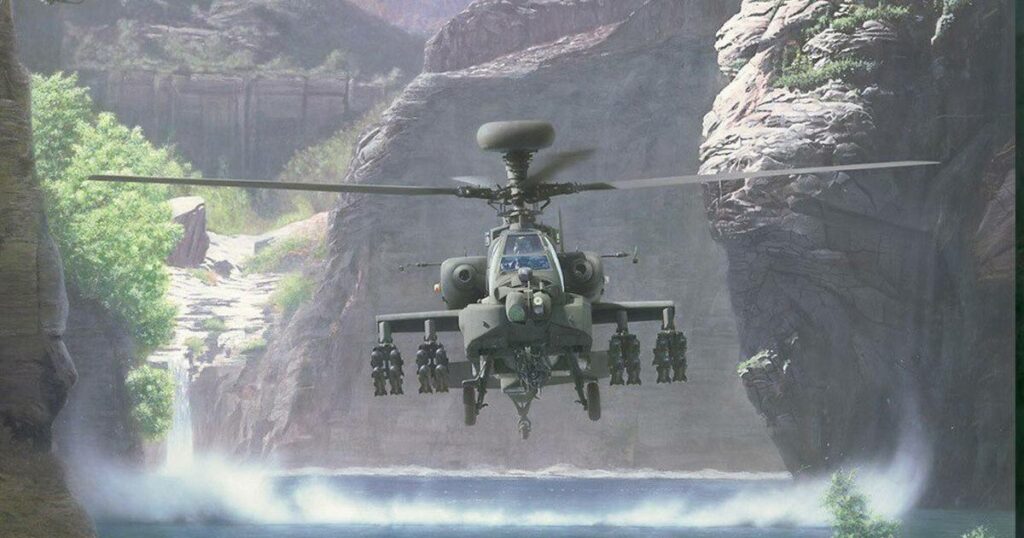
An assault helicopter is a specialized type of armed helicopter designed to carry out the offensive function of an attack aircraft against ground targets like infantry, vehicles, and fortifications. They are so heavily armed that the term “helicopter gunship” has been applied to them.
Attack helicopters can engage ground targets such as enemy infantry, military vehicles, and fortifications. Helicopter gunships are named for their hefty weaponry. Attack helicopters use autocannons, machine guns, rockets, and AGM-114 Hellfire anti-tank missiles. Attack helicopters can carry air-to-air missiles for self-defense against other helicopters and low-flying light combat aircraft.
Modern attack helicopters provide direct and accurate close air support for ground troops and destroy clustered enemy armor with anti-tank weapons. Attack helicopters protect transport helicopters and augment lighter-armed reconnaissance helicopters. An assault helicopter can destroy 17 times its production cost before being destroyed in combat.
Examples:
Boeing AH-64A Apache- U.S.-Made
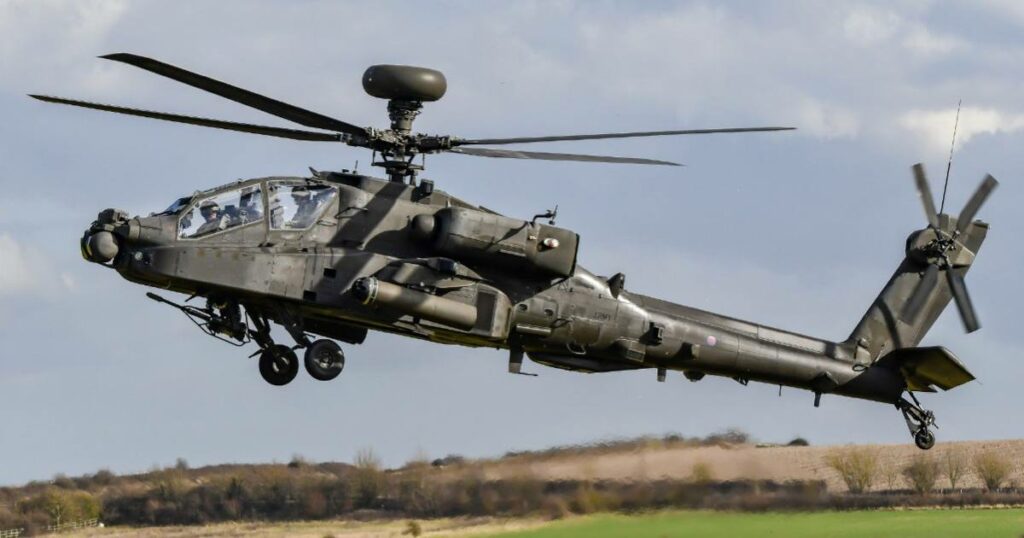
One thing about the Apache hadn’t altered from the AH-64A in 1984 when the United States Army adopted the first production model to the AH-64E today: its status as the world’s most advanced and proven attack helicopter.
The AH-64 Apache is the workhorse of the U.S. Army’s attack helicopter fleet and an increasing number of worldwide defense forces, with more than 1,280 aircraft in operation and a total of more than five million flight hours, of which 1.3 million have been in battle.
Since the AH-64E will be manufactured until at least 2028, the Apache will continue to be the primary attack helicopter for the U.S. Army and its ally nations until at least the 2060s. Boeing and the United States Army are committed to investing in cutting-edge technology, and the Apache is a prime example of their foresight in this area, with its inexpensive Modular Open Systems Architecture capacity and its role as a centerpiece of the Multi-Domain Operations (MDO) battlefield for decades to come.
Cheyenne Attack Helicopter AH-56- U.S.-Made
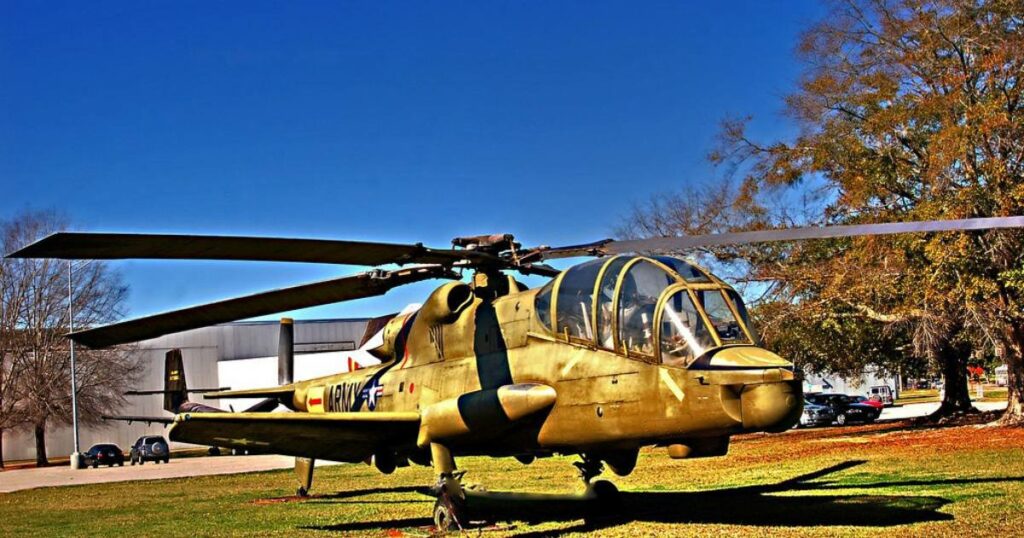
The Cheyenne was developed by Lockheed as a compound helicopter, which merges elements of both helicopters and fixed-wing aircraft to improve performance. A stiff main rotor, wings set low, and a pusher propeller were all part of the concept. A General Electric T64 turboshaft engine supplied propulsion for the Cheyenne.
The aircraft was propelled by a rear-mounted pusher propeller. The aerodynamic loading on the rotor was lightened at high speeds thanks to the combination of lift from the wings and thrust from the pusher prop. Collective pitch control allowed for up to 20% of the lift to be generated by the rotor at such speeds. Gyroscopic precession was used to regulate rotor pitch. The Cheyenne was capable of speeds greater than 200 knots (230 mph; 370 km/h), but it was disqualified from speed record consideration since it was a compound helicopter.
The Lockheed AH-56 Cheyenne assault helicopter was custom-built. For a specialist attack helicopter, the US Army ordered its creation. US Army requested a cutting-edge helicopter concept. Lockheed was contracted to build 10 helicopter prototypes for testing and evaluation in 1966. The AH-56 was innovative in many ways, including its design. Helicopters first flew in 1967.
Related: F-22 Raptor Vs. Su-57 Felon! 5th Generation Aircraft Battle!
2. Transport Helicopters
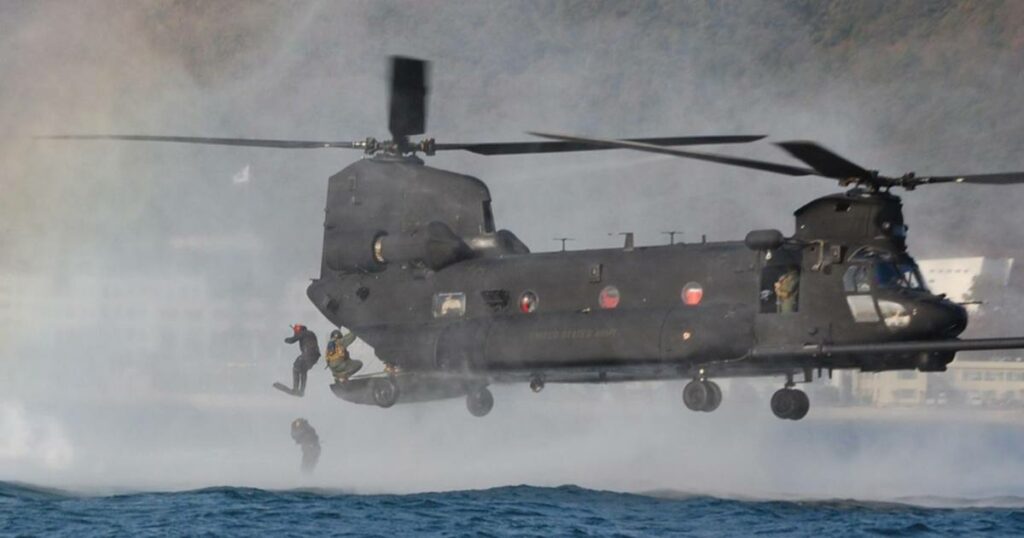
Transport helicopters transport troops and goods for military missions. These helicopters are frequently military-built in larger militaries, but private aircraft are also employed. These helicopters allow passengers and freight to be transported without a runway.
Slung cargo is transported internally or externally from an attachment point underneath the aircraft. While on the ground, the helicopter loads and unloads people. However, rescue hoists or rope lines can be used to pick up and drop down personnel while the aircraft hovers overhead if the terrain prevents helicopters from landing.
Examples:
Mil Mi-26 Helicopter-Russia Made
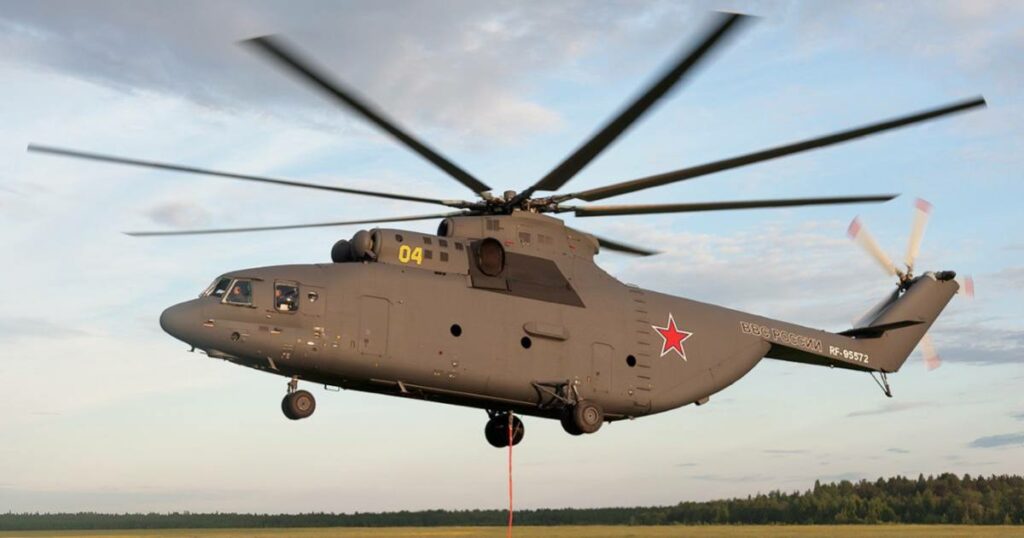
The Mil Mi-26 is a heavy transport helicopter with twin engines that is produced in Russia by the Mil Moscow Helicopter Plant. It first saw service in 1985 and is the world’s second-largest and second-most powerful helicopter. The first flight of the helicopter was in December of 1977. Up till the end of 2015, about 316 Mi-26 helicopters were manufactured.
The Mi-26 was developed to improve the dependability and security of air travel. It also lessens the burden on the pilots, the time required to plan the mission, and the overall cost of operations. The Mi-6 and Mi-12 helicopters will be phased out in favor of this new model.
The Mi-26 is multipurpose and can transport military vehicles such as troop carriers and mobile ballistic missiles to faraway sites. The use of composites in the helicopter’s fuselage design helps keep the machine’s overall weight down. Compared to the aluminum alloys previously utilized in the Mi-6’s fuselage, the new alloys are 26% lighter.
Related: Why is the C-5 Galaxy such a transport military Beast?
CH-53K King Stallion Helicopter- U.S.-Made

The CH-53K is the heavy lift replacement for the CH-53E in the United States Marine Corps (USMC). The CH-53K, the newest and most powerful military helicopter, will increase the fleet’s capacity to deliver more stuff faster across the area of responsibility utilizing tried-and-true technologies.
The CH-53K has a mission radius of 110 nautical miles (203 km) and can transport 27,000 pounds (12,247 kg) in Navy high/hot settings, nearly double the CH-53E’s payload capacity. It can raise up to 16,329 kg (36,000 pounds) externally.
Smaller shipboard footprint, cheaper operating expenses per aircraft, and fewer direct maintenance man-hours per flying hour are all design goals. The CH-53K is on schedule for its initial fleet MEU deployment in FY2025, and it can land and take off in poor visibility. The US Marine Corps plans to purchase two hundred CH-53K helicopters.
Related: How Does a Military Helicopter Work?
3. Observation Helicopters
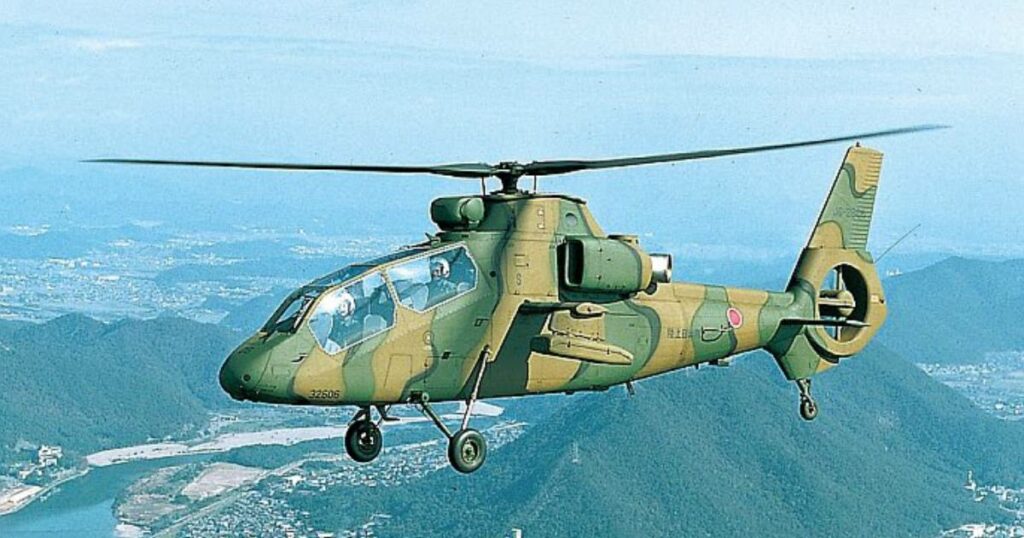
The purpose of this chopper is to locate enemy positions so that artillery or air strikes can be directed against them. Pilots get unrestricted views thanks to the spacious, contoured, and well-glazed cockpits. The newest generation of military observation helicopters are fitted with radios and optical sensors. Specific examples include night vision cameras, radars that can see into the future, etc.
This type of armored helicopter, similar to other types of armored helicopters, is outfitted with armaments for the purpose of providing protection and destroying enemies. In terms of the various types of weaponry, the standard fare includes autocannons, machine guns, missiles, and explosives.
Examples:
The Hughes YOH-6A Helicopter ( model 369 )- U.S.-Made

To meet the needs of the United States Army’s Light Observation Helicopter (“L.O.H.”), Hughes developed the Model 369. The YOH-6A was powered by a turboshaft engine (Allison Model 250-C10) that was tilted at 45 degrees and located behind the cabin.
Maximum continuous power was 212 shaft horsepower at 52,142 r.p.m. and 693 °C turbine outlet temperature, while maximum takeoff power was 250 shaft horsepower at 738 °C turbine outlet temperature for a period of five minutes. The T63-A-5A (250-C10A) engine is significantly more powerful and was used in the production of OH-6A helicopters.
Bell OH-58 Kiowa Helicopters- U.S.-Made

Bell’s OH-58 Kiowa helicopters are single-engine, single-rotor aircraft that serve primarily in the military’s observation, utility, and direct fire support roles. The original OH-58A’s primary function was target identification for other platforms like the Bell AH-1 Cobra attack helicopter and field artillery./
The aircraft was unarmed, had a maximum takeoff weight of 1,451 kilograms (3,200 pounds), and could seat two people. While earlier models required the crew to make observations, most recent iterations feature high-tech sensors that can pinpoint an object’s exact location.
Later-built rotorcraft also saw significant increases in payload capacity; for example, the OH-58D Kiowa was built to carry a maximum of 2,495 kilograms, an increase of 72 percent over the initial design. This type of helicopters was widely used During the Vietnam War, And about 45 OH-58A helicopters were lost to accidents and enemy fire.
4. Maritime Helicopters
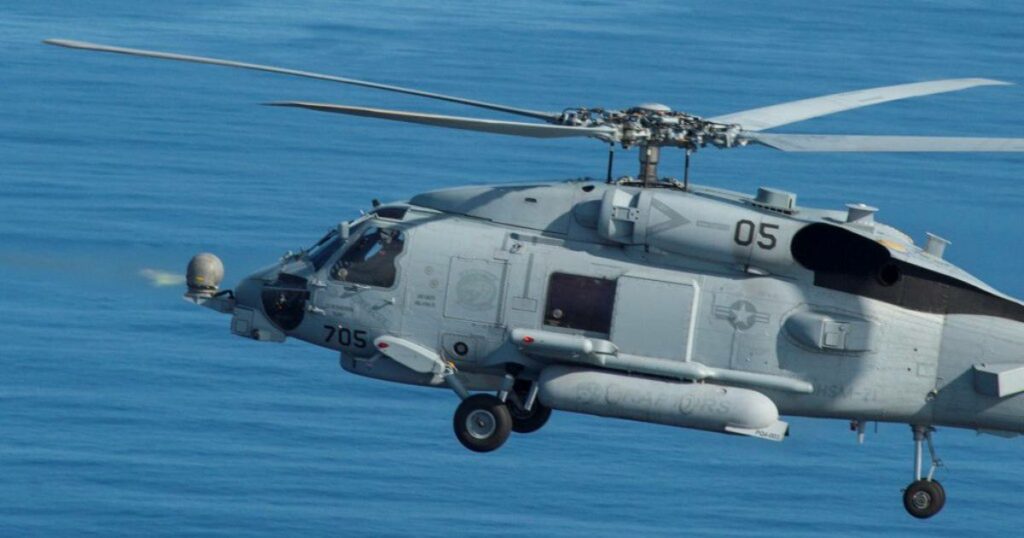
This helicopter model was developed to be used in naval facilities and serve various purposes. It’s a versatile chopper that can be used for transport, SAR, anti-submarine warfare, anti-shipping deterrence, and more.
Helicopters designed for usage in the maritime industry are outfitted with features such as sea-ditching, engine snorkels, additional fuel tanks, and paint that is resistant to saltwater corrosion. Space minimization is a primary design principle. Rotor blades can fold, tails can hinge, and so on. Their materials are designed to minimize bulk while maximizing efficiency.
Examples:
Sikorsky SH-60 SeaHawk- U.S.-Made
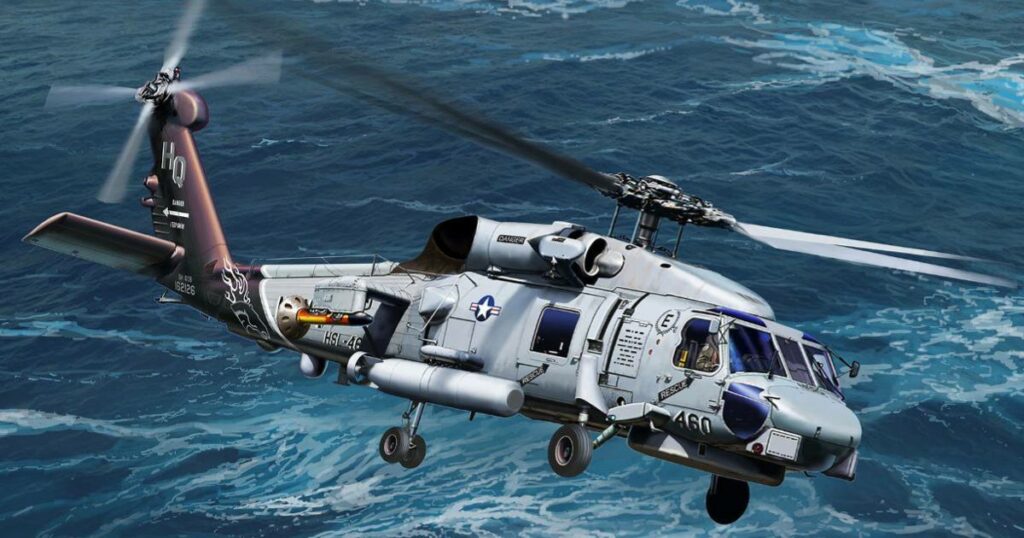
For more than 30 years, the Sikorsky SH-60 Seahawk has been an indispensable part of naval aviation, thanks to its versatility. The Seahawk’s outstanding capabilities and adaptability have made it an essential part of military operations around the world.
Sikorsky Aircraft Corporation’s SH-60 Seahawk is a flexible helicopter designed for use by the US Navy. Primary applications include anti-submarine warfare, SAR, and maritime interdiction missions. The Seahawk is a twin-engine, four-rotor helicopter that may be outfitted for a variety of missions. It can carry up to 3,500 pounds of payload, which includes sonar systems, missiles, and torpedoes, and has a range of over 500 miles.
AgustaWestland AW101- Italy And UK
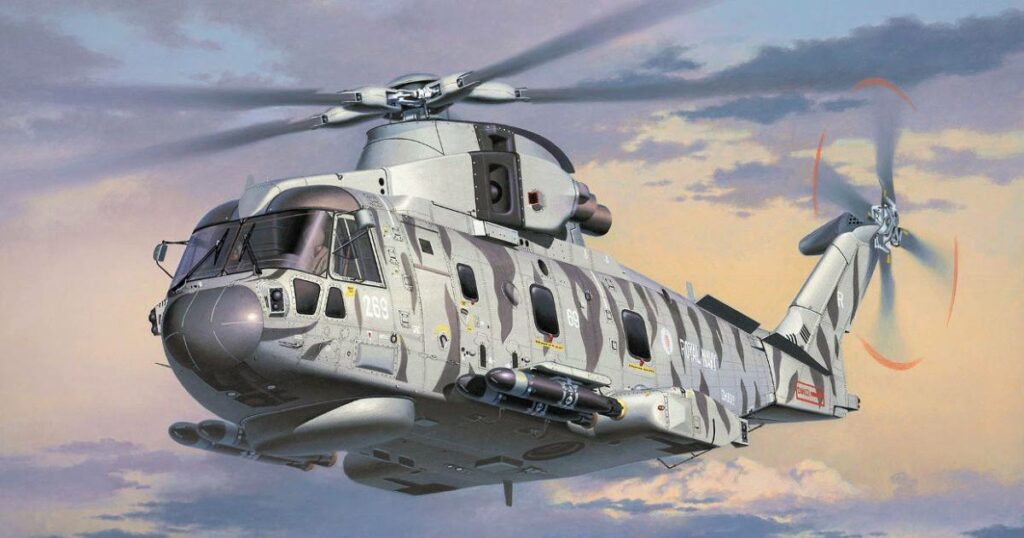
The helicopter’s most important feature is its adaptable base. The five-blade main rotor, four-blade teetering rotor, and main lift structure with various primary and secondary load channels all contribute to the crashproof modular construction.
There is a lot of aluminum and lithium in the fuselage. Rotor blades are made of carbon/glass with an aerodynamic Nomex honeycomb and rohacell foam. ACSR dampens unwanted vibrations. The back ramp is controlled hydraulically, and the rotor hub is made of a composite with a minimal hinge offset.
The undercarriage is balanced by two wheels. More people can be accommodated thanks to the enlarged exits and windows. The back ramp and sliding cargo door, each measuring 1.8 meters wide, expedite loading and unloading.
The helicopter operates between -40 and 50 degrees Celsius. The fatigue life of a helicopter airframe is ten thousand hours. Protection from ice makes it easier to work in conditions where icing is expected. Engine inlet particle separators provide safety during sandstorms. Takeoff may occur on soft or uneven ground thanks to the landing gear and high-floatation tires.
5. Multi-mission and Rescue Helicopters

The name of this helicopter type accurately describes its function. Its primary function is to locate and rescue injured or downed service members. During WWII, this model saw its first widespread deployment.
However, they’ve progressed since then. Especially in hazardous conditions and rough terrain, modern search and rescue helicopters’ sophisticated avionics and radar systems greatly improve location accuracy.
Examples:
Aérospatiale Alouette III – France Made
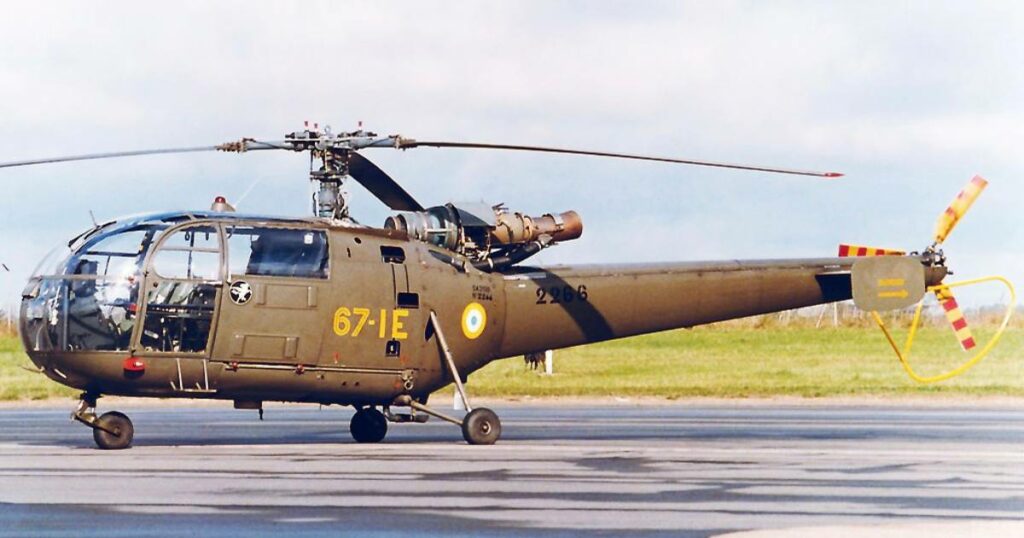
One of the most well-known and widely-used helicopters is the Aérospatiale Alouette III. This utility helicopter began in France in 1961 when Aérospatiale began producing a design by Sud-Aviation. Because of its extraordinary stability at high altitudes, its adaptability, and the fact that it could carry a crew plus a person on a stretcher, it was first utilized by the French military and quickly became a crucial instrument for rescue missions.
In its passenger configuration, the Alouette III can carry seven people and is totally faired in, save for the turboshaft. Typically, tricycle landing gear is installed on it. Landing the craft on water or snow is possible by simply adding float gears or skis.
Related: US Landing Craft Air Cushion can carry up to 75 tons at speeds over 46 mph
The aircraft is equipped with a computer, an automatic starting system, a collective pitch indicator, and hydraulic servo-controls (both cyclic and collective) that allow the pilot to instantly determine the aircraft’s maximum takeoff weight based on the ambient air pressure and temperature. A cabin up front and a tail boom at the back make up the airframe’s body structure.
Bell 212- United States/Canada

The Bell 212 Twin Huey, or Twin Two-Twelve, is a twin-engine, medium-sized helicopter with two rotor blades. It had its maiden flight in 1968. The 212 is designed for use by civilian operators and can carry up to fifteen people (one pilot and fourteen passengers). The Bell 212, which is based on the Bell 205 but with a longer fuselage, was originally designed for the Canadian Armed Forces.
The 212’s primary rotor is driven by a Pratt & Whitney Canada PT6T-3 Twin-Pac, consisting of two PT6 power turbines connected and driving a shared gearbox. Their maximum output is 1,800 horsepower (1,342 kW). If one engine fails, the 212 can continue its cruise at maximum weight thanks to the other engine’s ability to produce 900 horsepower (671 kilowatts) for 30 minutes or 765 horsepower (571 kilowatts) continuously.
6. Training Helicopters
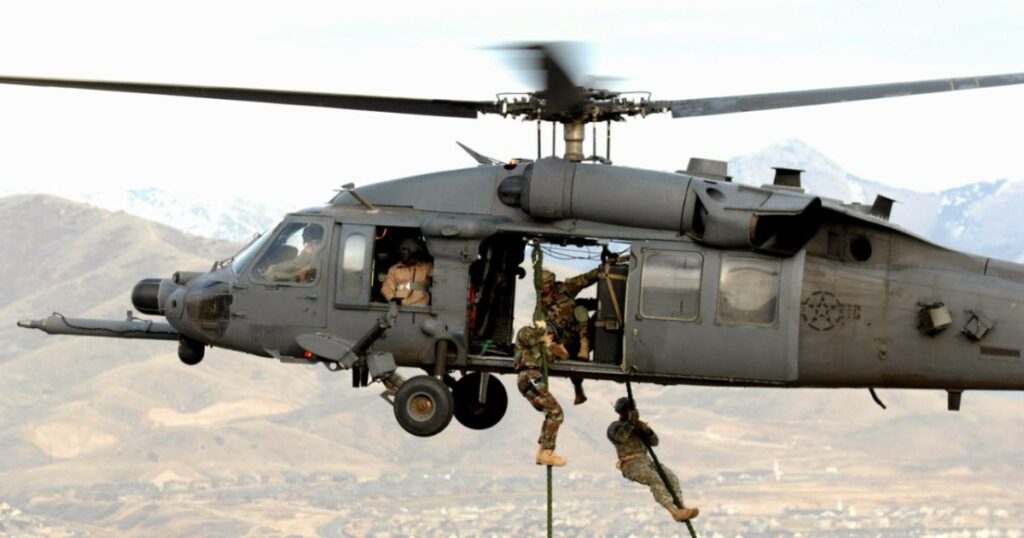
Military pilots are taught to fly with the help of trainer helicopters. Although these helicopters are often smaller and less powerful than other types of military helicopters, they provide pilots with many opportunities to hone their skills.
The production and operating costs of trainer helicopters are lower than those of other types of helicopters, making them ideally suited for training purposes. They are more nimble and can be utilized in a wider range of situations, from urban to mountainous, allowing students to gain experience flying in various conditions before moving on to the “real” thing.
Examples:
Bell TH-57 Sea Ranger- U.S.-Made

The TH-57 is based on the civilian Bell Jet Ranger 206. These planes serve various purposes beyond just training, including chasing and utility services.
At first, the JetRanger was built to participate in a competition for light observation helicopters within the United States Army. Despite Bell’s loss, the 206 was a commercial triumph. Hundreds of aviation students at Naval Air Station Whiting Field in Milton, Florida, receive advanced (IFR) training on the TH-57 Sea Ranger each year.
The mission of the Naval Undergraduate Flight Training Systems Program Office (PMA-273) is to create a comprehensive, flexible, and carrier-capable Naval Flight Training System in which Naval Aviation Cadets and Naval Aviation Cadet Flight Officers can learn the critical aviation skills the Navy will need for the future.
Bell TH-67 Creek- U.S.-Made
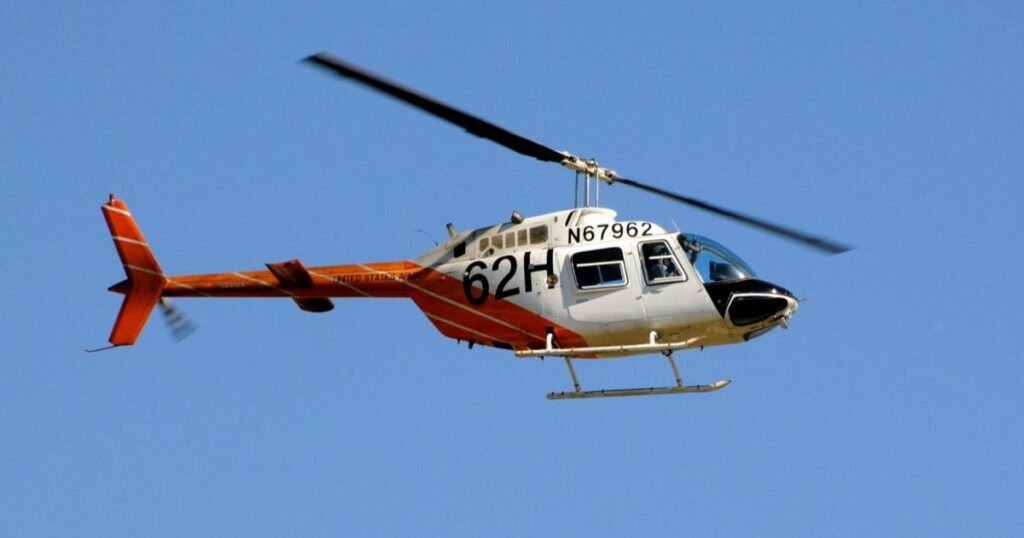
Originally designed by the United States Army as a training aircraft, the Bell 206 Jet Ranger was the basis for the TH-67 Creek, a light utility helicopter. U.S. Naval Test Pilot School students, learn about and observe various flight characteristics and testing methods on this rotary-wing aircraft. In this respect, the TH-67 is typical of early tilt-rotor helicopters.
The TH-67 Creek is a state-of-the-art helicopter used for initial entry rotary wing training. It replaced the aging UH-1H, which had been the Army’s interim trainer since the 1988 retirement of the TH-55 Osage. In the tactical portion of pilot training, the OH-58 Kiowa is still the helicopter used. But for initial entry rotary wing flight instruction, the TH-67 is the aircraft of choice for a new generation of Army aviators.
7. Utility Helicopters
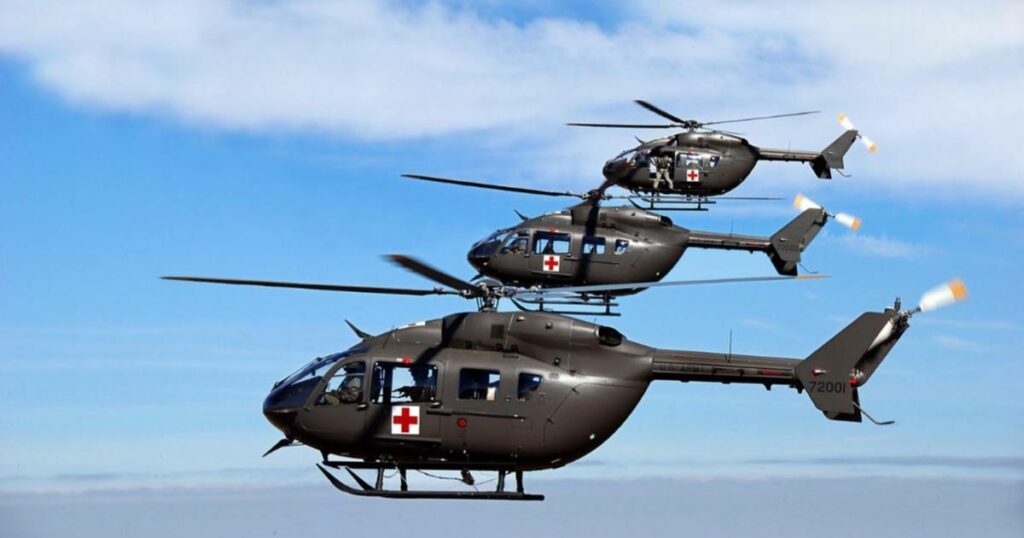
A utility helicopter may be used for a variety of purposes. Utility work, such as agricultural aircraft, is an everyday use for civilian helicopters. In order to supplement their regular forces, several police and fire departments own and deploy utility helicopters.
Local hospital systems operate medevac helicopters in various nations for use in urgent situations. Ground assault, aerial assault, military logistics, casualty evacuation, command and control, and transporting troops are all possible with a utility military helicopter. There will inevitably be some word overlap with transport helicopter.
Examples:
Bell UH-1 Iroquois- U.S.-Made
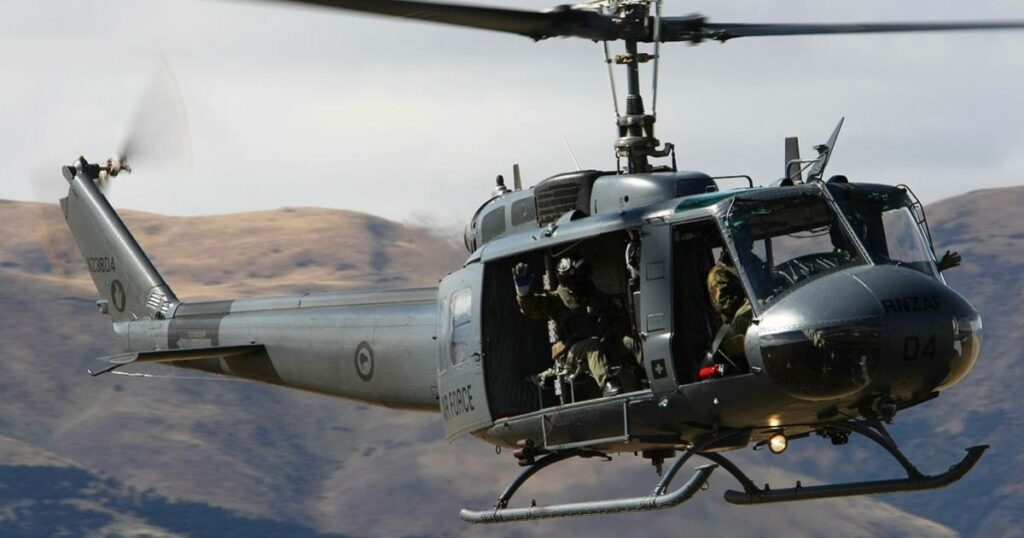
The Bell UH-1 Iroquois, or “Huey,” is a versatile utility helicopter that saw extensive use in the Vietnam War. Bell created powerful helicopters in the middle of the 1950s, and over 16,000 were manufactured by 1976, with over 7,000 of those being used in Vietnam.
The planes were mostly used to transport troops and freight, evacuate sick people, and launch aerial attacks. Hueys have also seen use in non-military contexts, such as in firefighting, assistance delivery, scientific study, and rescue missions.
It has two rotor blades on the main rotor and a metal fuselage with a semi-monocoque design for stability. Power ratings for the original UH-1 ranged from 700 horsepower (522 kilowatts) to 1,400 horsepower (1,040 kilowatts) thanks to the use of a single Lycoming T53 turboshaft engine. In later UH-1 and comparable variants, dual engines and four-blade rotors became commonplace. All UH-1s are built in a similar fashion. The UH-1H is the workhorse of the family, so to speak, and is typical of the many models.
Related: Antonov An-225 – The Largest Aircraft in the World is Destroyed by Russian Air Forces
Pilatus PC-12- Switzerland
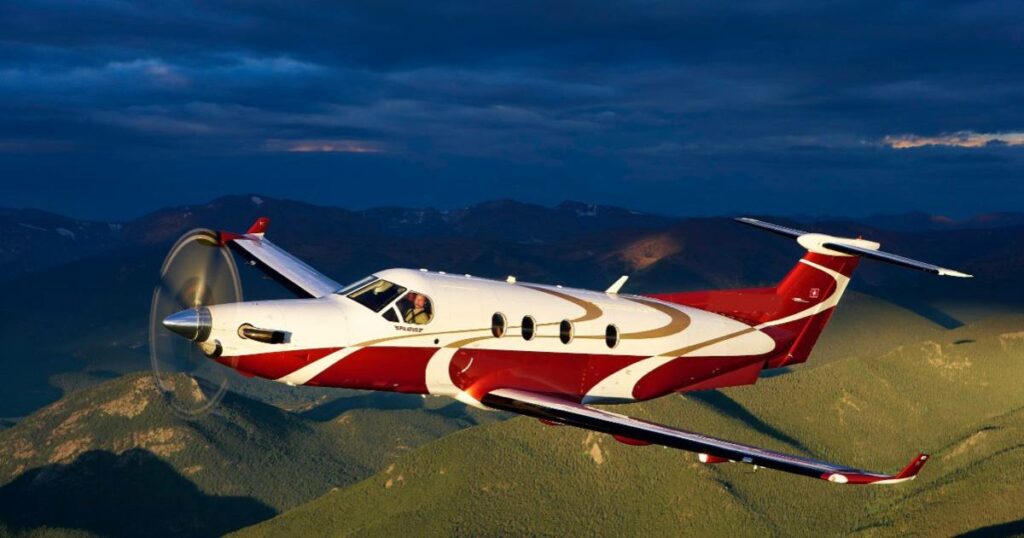
The Pilatus PC-12, first produced by Pilatus Aircraft in Stans, Switzerland in 1991, is a single-engine turboprop passenger and freight aircraft. This plane competes head-on with the King Air line of aircraft in the business transportation and regional airliner operator markets. First delivered in May of 2008, the Pilatus PC-12 NG (Next Generation) entered production in 2007.
Versatility, performance, reliability, and operational flexibility are just some of the reasons why the Pilatus PC-12NG has become so well-liked. It’s one of the reasons why it’s so widely used. Part 91 and 135 operators prefer the PC-12 NG due to its performance, spacious cabin, and standard cargo baggage compartment.
Honeywell Primus Apex avionics provide 3D landscape rendering, smart view systems, and primary and multi-function displays in the cockpit. The maximum range of the PC-12 NG, which is powered by a Pratt & Whitney Canada PT6A-67P engine, is 1,635 nautical miles.
About 840 Pilatus PC-12NG planes have been manufactured since 2008, and more are on the way. The vast majority see service in the civilian sector, mostly in roles like air ambulance and employee transportation. The United States Navy, the Finnish Air Force, the Irish Air Corps, and the Afghan Air Force all use this plane.
Conclusion
Now You have gained knowledge about the 7 distinct categories of military helicopters and seen examples of each. Each type has a distinct role and its pros and cons.
Aircraft, in general, and helicopters, specifically, have played a big role in military missions as well as fire and rescue disasters. Which type of the 7 discussed helicopters do you think is the most important, and what new types are needed to be developed in the future?

